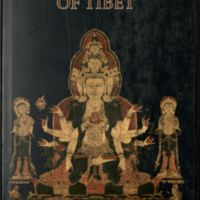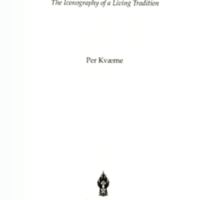The Bon Religion of Tibet: the Iconography of a Living Tradition
Dublin Core
Title
The Bon Religion of Tibet: the Iconography of a Living Tradition
Subject
Bon gods
Bon symbolism
Bon art
Bon (Tibetan religion)
Bon symbolism
Bon art
Bon (Tibetan religion)
Description
The Bon religion claims to be the original and authentic religion of the Tibetan people, and to have been firmly established in the Land of Snows long before Buddhism was introduced in the seventh century AD. Although its adherents were gradually reduced to a minority, Bon has nevertheless continued to flourish in many areas up to the present day in Tibet, especially in the eastern and north-eastern regions where a reconstruction and renaissance is taking place, as well as within the Bon community in exile in India. The iconography of the Bon religion is presented through a series of thangkas, miniatures and bronzes from public and private collections in the West, as well as from communities within Tibet and in exile. With a few exceptions they are hitherto unpublished and date from the late fourteenth to mid-twentieth centuries. The peaceful, tutelary, protector and local deities as well as the Bon siddhas, lamas and dakinis are identified and fully described by means of excerpts from ritual or biographical texts which are translated here for the first time.
Creator
Per Kvaerne
Publisher
Boston ; London : Shambhala
Date
2001
Text Item Type Metadata
Original Format
Book
Citation
Per Kvaerne, “The Bon Religion of Tibet: the Iconography of a Living Tradition,” Humanities Hub, accessed December 14, 2025, https://humanitieshub.sdsu.edu/omeka/items/show/538.


